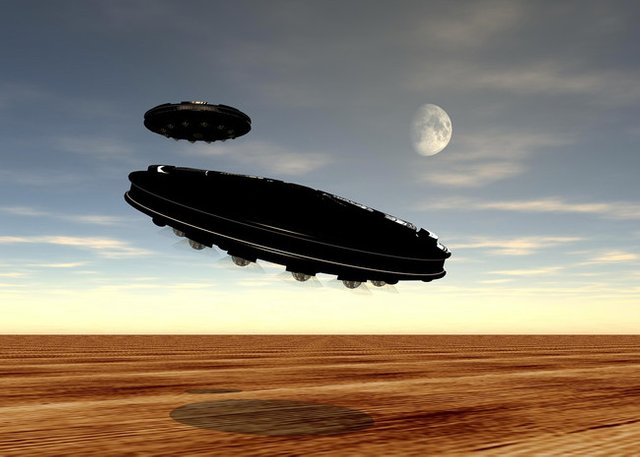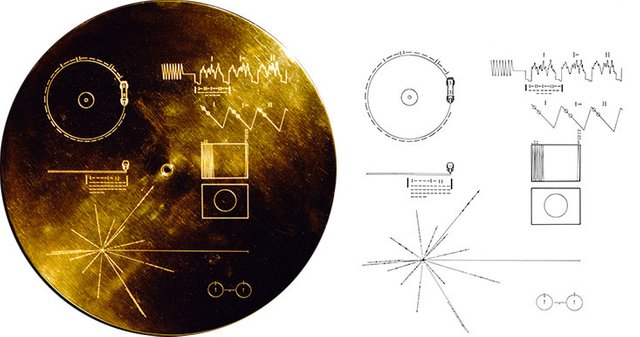
Many are the missions that NASA accumulates, but some remain more in the memory for reasons that sometimes escape their goal. These include the Pioneer 10 and 11 missions, which we mentioned when we talked about that great unknown who is still Jupiter, but the curious thing is that along with Voyager 1 and 2 are space missions that contain messages for aliens.
Looking back over their mission, the Pioneer 10 and 11 and Voyager missions were launched in the 1970s with the intention of reaching beyond Jupiter and Saturn, in fact Voyager 1 was the first spacecraft created by humans to reach interstellar space. Having such far-off (or little concrete) destinies, in the space agency they thought it was a good idea to equip them with a kind of time capsule that stores sounds and images.
A letter of introduction in binary, but with "dibus"
Without putting ourselves in the face to face that draw stories like those of' Arrival' or' Encounters in the third phase', it is possible to ask oneself what and how something is said to an alleged entity. See the aliens? You hear? Are there? We can't answer this yet (not absolutely), but in case the flies had a message.
In the Pioneer 10 and 11 missions, prior to Voyager, there were metal plates that gave evidence of the place and time of creation of the ships. But on Voyager, NASA thought of something more elaborate and informative, and these included a phonograph recording with sounds and images that could represent "the diversity of life and culture on Earth,"according to NASA.

The symbols on the disc have to do with the playback of the recording among other things and are explained in detail on the web:
Above left: A representation of the phonograph and needle, which is in the correct position to start playback at the beginning of recording. The circumference indicates in binary that the appropriate rotation speed is 3.6 seconds, expressed in units of 0.70 x 10^-9 seconds, the time period associated with the fundamental transition of the hydrogen atom.
Center left: Another needle with another binary number, in this case indicating the duration of one face (about one hour).
Above right: Indicates how the images are to be reconstructed from the audio signal, representing the waves and again using the binary.
Center right: it indicates in binary the duration of each line of the image (about 8 milliseconds) among other things and the first image to be seen if the signal is decoded correctly: a circle.

The symbols below refer to other aspects beyond the recording. These are the drawings on the metal plates of the Pioneer 10 and 11 probes, the one on the left indicating the position of our Sun in reference to fourteen pulsars (of which the period is indicated) and the one on the right depicting a hydrogen atom in two states.
In addition to the symbols and the engraving, there is a radioactive uranium plate that acts as an "hourglass".
In addition to this, Voyager integrates a uranium 238 plate with a radioactivity of 0,00026 microcurios that acts as an atomic "hourglass", so that the alien can calculate the time it takes from when the plate was installed until he receives it taking into account the decomposition of the element (there is time, according to calculations half of which would decompose in 4,510 million years).
The images we sent to the aliens
The first image is a circle, but what else have we sent to other cosmic intelligences capable of deciphering it? This was raised by Ron Barry, who received an original copy of the audio in high fidelity when the publisher of BoingBoing David Pescovitz (you can buy[the original vinyl will be sold soon and can be reserved in Ozma Records) and decided to emulate the role of alien from the beginning and decode the images.
All his ideas, sneaks and inquiries were gathered in a document, which starts from deciphering the symbols that we have described above, and continues with the audio decoding (at a level that, according to the author's words, is technical enough for another amateur to try to recreate the process). It's 18 pages step by step, each one described in detail including deductions, units and tools.
Simplifying much he left using the Audacity software to see the waves and be able to zoom in (obtaining the saw waves) and find out that the recordings were made at 2x. He took the images from the measurements of the symbols (8 milliseconds per line, 512 lines per image, etc.), measuring wavelengths and translating them into pixels, obtaining that first circle on a flat background indicated by the disk. It shows it in real time in a video in which it synchronizes the audio (very much like a 56k modem), with more than a hundred images.
Thus, NASA decided to send a crocodile belly up, birds, hands, galaxies, silhouettes, athletes, representations of different cultures and mathematical and physical equivalences among many other things. It is curious that, although in any case they are familiar and even everyday figures, in some cases it leaves that disturbing possessive as much for what is represented as for what an alien could interpret to have skills such as reading, interpretation and deduction.